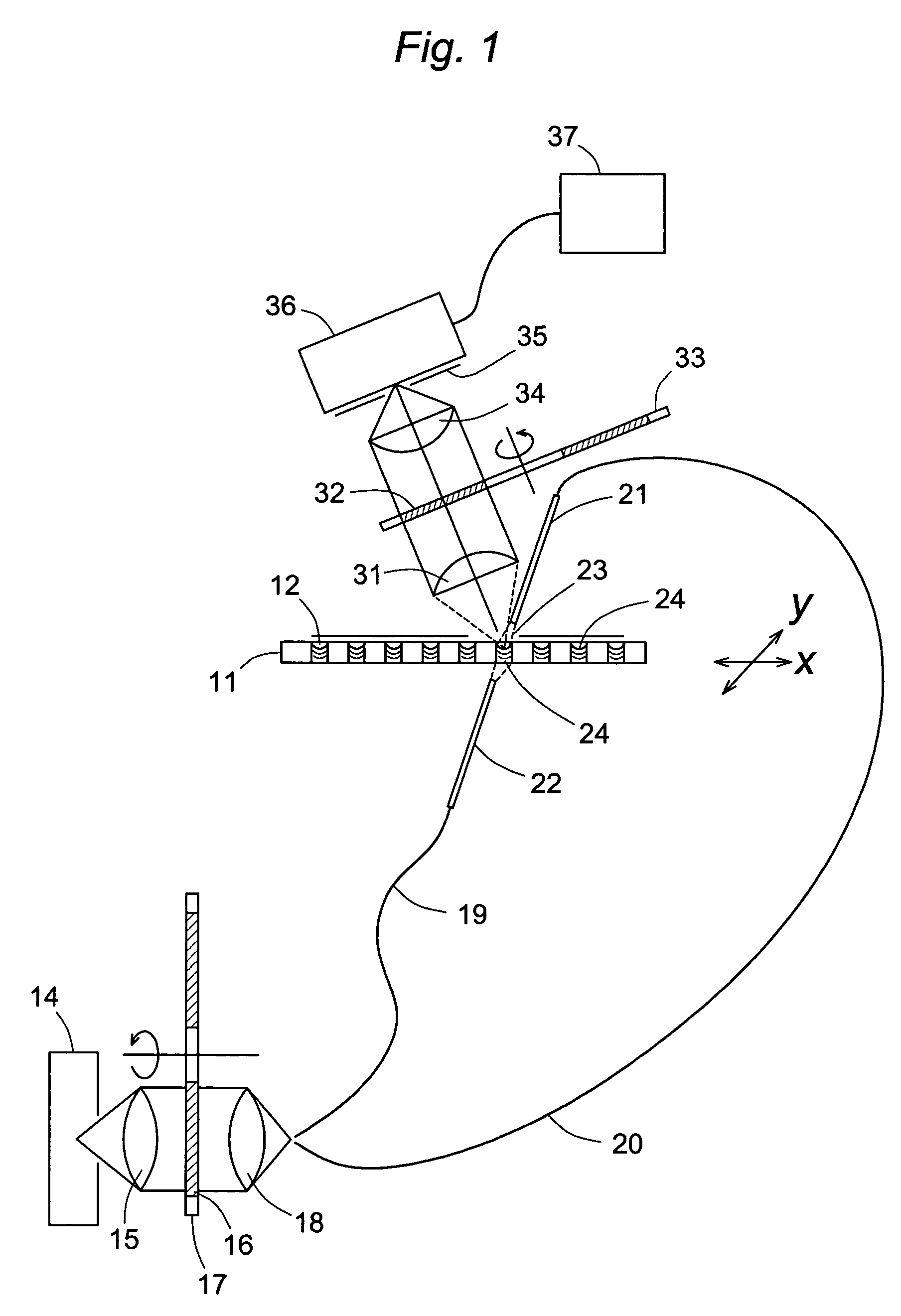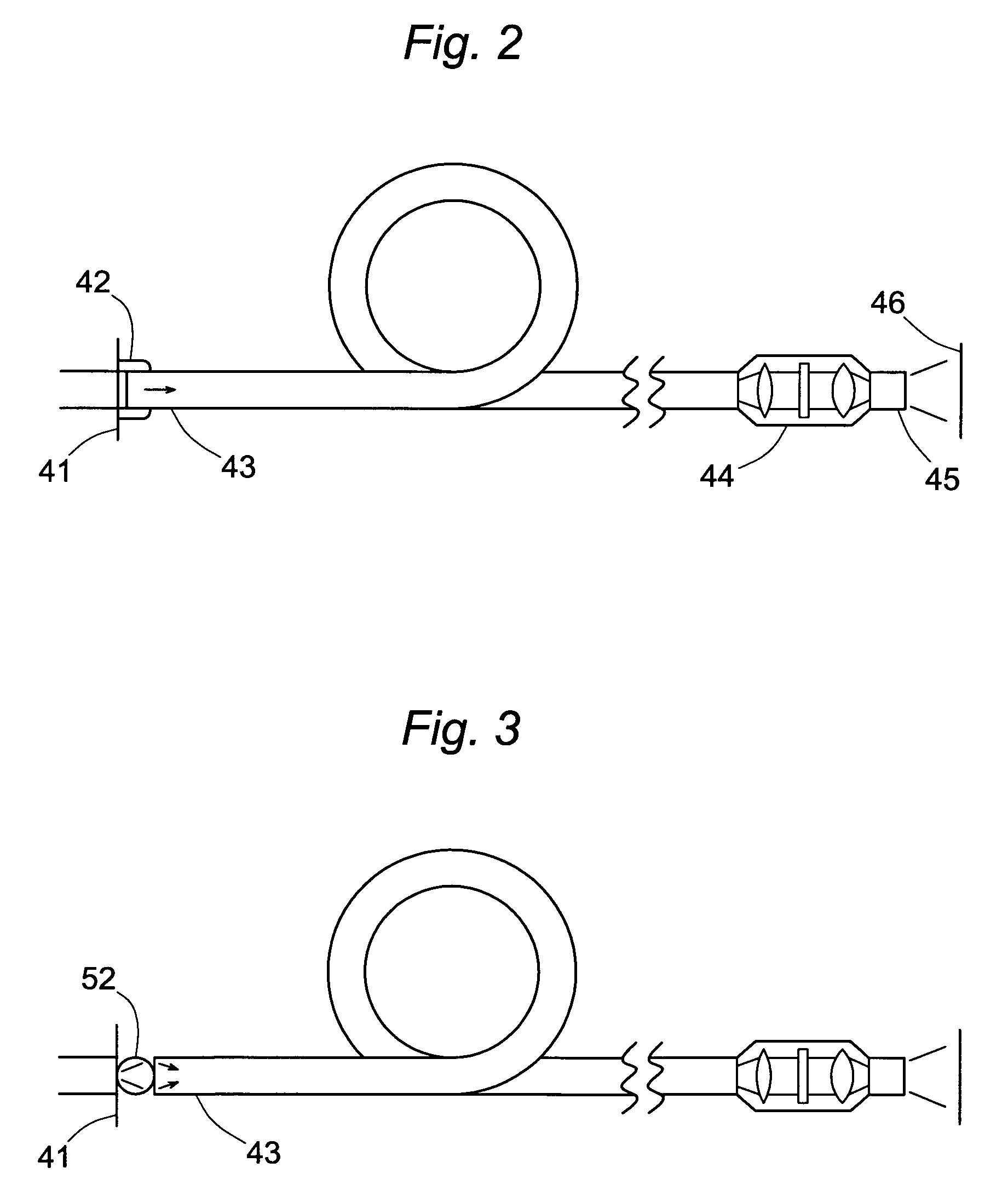Biochemical assay detection in a liquid receptacle using a fiber optic exciter
a fiber optic exciter and liquid receptacle technology, applied in the field of biochemical assays performed in rec, can solve the problems of loss of assay sensitivity, loss of much of excitation light, and limited sensitivity of pierced mirror systems, and achieve maximum signal-to-noise ratio, no loss of intensity, and enhanced use
- Summary
- Abstract
- Description
- Claims
- Application Information
AI Technical Summary
Benefits of technology
Problems solved by technology
Method used
Image
Examples
Embodiment Construction
[0015]Receptacles in which bioassay detection can be performed by use of the present invention include cuvettes, small test tubes, wells of multi-well plates, and any variety of vessels capable of containing the components used in performing biochemical assays. Examples of multiwell plates are MICROTITER® plates, as well as plates bearing different designations but generally containing either a row of wells or a two-dimensional rectangular array of wells. The most commonly used multi-well plates are those with a 96-well (12×8) array. Others have 6-well, 12-well, 48-well, 384-well, and 1536-well arrays. Typical well diameters or widths are from about 4 mm to about 40 mm, and preferably from about 4 mm to about 11 mm. The emissions to be generated and detected in the practice of this invention can arise from liquid retained in the receptacle, from substances suspended in the liquid, or from substances adhering to the receptacle walls.
[0016]The excitation system of this invention may c...
PUM
| Property | Measurement | Unit |
|---|---|---|
| widths | aaaaa | aaaaa |
| widths | aaaaa | aaaaa |
| divergence angle | aaaaa | aaaaa |
Abstract
Description
Claims
Application Information
 Login to View More
Login to View More - R&D
- Intellectual Property
- Life Sciences
- Materials
- Tech Scout
- Unparalleled Data Quality
- Higher Quality Content
- 60% Fewer Hallucinations
Browse by: Latest US Patents, China's latest patents, Technical Efficacy Thesaurus, Application Domain, Technology Topic, Popular Technical Reports.
© 2025 PatSnap. All rights reserved.Legal|Privacy policy|Modern Slavery Act Transparency Statement|Sitemap|About US| Contact US: help@patsnap.com



